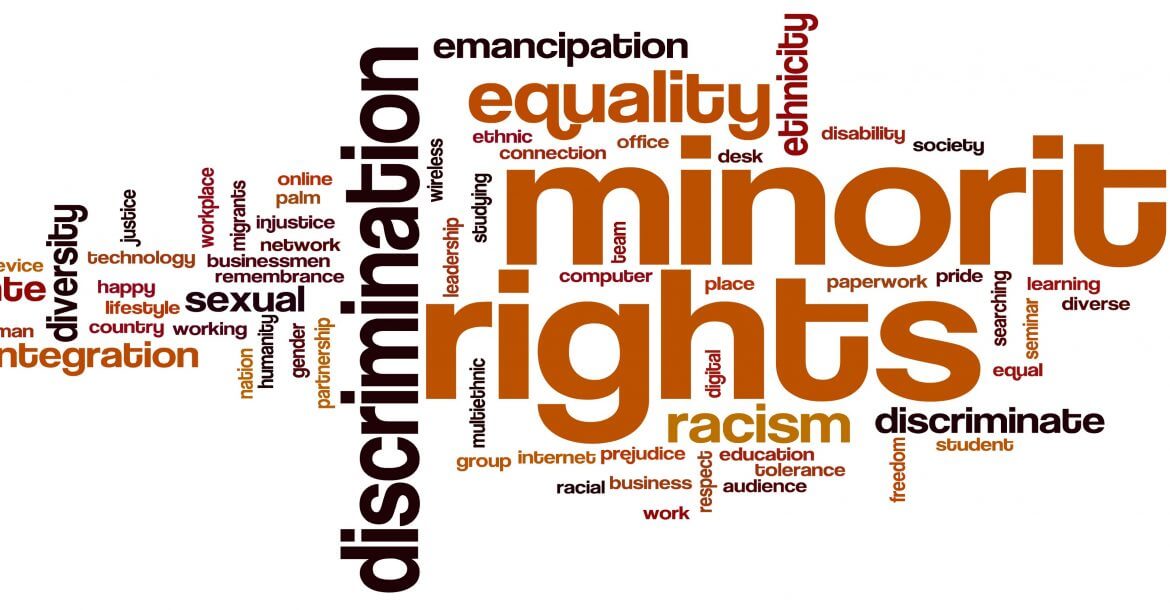How Minorities Are Identified In India.
~Preet.

The Union government has informed the Supreme Court (SC) that state governments can now confer minority status to any religious or linguistic group, including Hindus. The Supreme Court had sought the Union government's answer in a petition seeking directives for the development of standards for recognising minorities at the state level. The term "minorities" appears in a few articles of the Constitution but is never defined.
The petition claimed that Hindus are a'minority' in six Indian states and three Union Territories yet were allegedly unable to benefit from minority-specific initiatives. Plea According to the 2011 census, Hindus have become a minority in Lakshadweep (2.5%), Mizoram (2.75%), Nagaland (8.75%), Meghalaya (11.53%), J&K (28.44%), Arunachal Pradesh (29%), Manipur (31.39%), and Punjab (38.40 percent ). In these states, they should be granted minority status in accordance with the concept established by the Supreme Court in its 2002 TMA Pai Foundation and 2005 Bal Patil Case rulings. The Supreme Court ruled in the TMA Pai case that religious and linguistic minorities must be treated state-wise for the purposes of Article 30, which deals with minorities' rights to establish and run educational institutions. The Supreme Court alluded to the TMA Pai verdict in its 2005 decision in 'Bal Patil.' The legal stance explains that the'state' will henceforth be the unit for assessing the status of both language and religious minorities. According to the appeal, the NCMEI (National Commission for Minority Education Institution) Act of 2004 grants the Centre unrestricted jurisdiction and is "manifestly arbitrary, unreasonable, and offensive." Section 2(f) of the NCMEI Act of 2004 gives the Centre the authority to recognise and notify minority communities in India.
The petitioners' claim, according to the Centre, is incorrect since states can also "certify institutions as being minority institutions in accordance with the norms of the respective state." The Centre said that Jews were designated as a minority population in Maharashtra in 2016, while Urdu, Telugu, Tamil, Malayalam, Marathi, Tulu, Lamani, Hindi, Konkani, and Gujarati were designated as minority languages in Karnataka. Parliament and state legislatures have concurrent authority to adopt legislation to safeguard minorities and their interests. Matters such as declaring Judaism, Bahaism, and Hinduism followers who are minorities in Ladakh, Mizoram, Lakshadweep, Kashmir, Nagaland, Meghalaya, Arunachal Pradesh, Punjab, and Manipur to be minorities and establishing guidelines for minority identification at the state level may be considered by the concerned state governments. The TMA Pai decision also "shows that the Supreme Court has nowhere undermined the Central Government's jurisdiction to notify a group as a'minority.'" Article 246 of the Constitution, along with Entry 20, "economic and social planning," of the Concurrent List, enabled Parliament to adopt legislation to promote and defend the interests of minorities. Under Section 2(c) of the National Commission for Minorities Act of 1992, Parliament has the legislative authority and the Central Government has the executive authority to notify a group as a minority.
Article 29 states that any group of individuals resident in any region of India who speak, write, or practise a separate language, script, or culture has the right to preserve such language, script, or culture. It provides security to both religious and linguistic minorities. However, the Supreme Court ruled that the reach of this article is not necessarily limited to minorities alone, because the term "part of citizens" in the Article refers to both minorities and the majority. According to Article 30, all minorities have the freedom to create and manage educational institutions of their choosing. Article 30 protects only minorities (religious or linguistic) and does not apply to any other group of people (as under Article 29). The 7th Constitutional (Amendment) Act of 1956 included article 350-B, which provides for the appointment of a Special Officer for Linguistic Minorities by the President of India. The Special Officer would be responsible for investigating any matters relevant to the constitutional safeguards for linguistic minorities.
Currently, only groups notified by the central government under section 2(c) of the NCM Act, 1992, are considered minority communities. With the passage of the NCM Act, 1992, the MC was elevated to the status of statutory body and renamed the NCM. The first Statutory National Commission was established in 1993, and five religious communities, namely Muslims, Christians, Sikhs, Buddhists, and Zoroastrians (Parisis), were designated as minority communities. Jains were also designated as a minority group in 2014.
Comments
Post a Comment